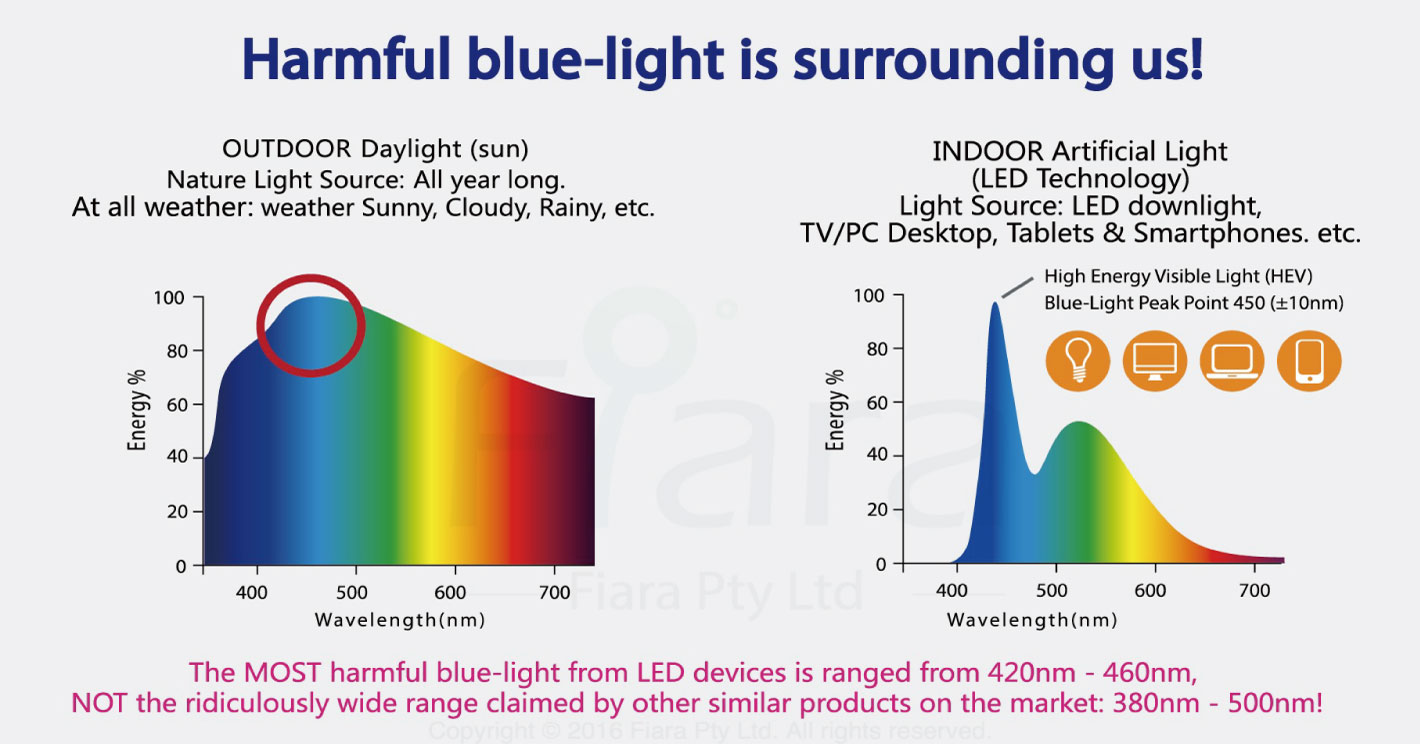Where does blue light come and how is it harmful?
Our eyes detect a narrow band of wavelengths known as the visible light spectrum, which is measured in nanometres. It consists of the three primary colours: blue (380–490nm), green (490–590nm) and red (590–780nm).
These wavelengths are received by the retina, a light-sensitive layer of tissue lining the inner surface of the eye, and from there the information is sent to the visual centres of the brain. Blue light (380–490nm) has a shorter wavelength, so carries more energy compared to other colours in visible light and penetrates deeper into the eye. It can therefore cause more damage than other colours if it is allowed to reach the retina without any protection mechanism in place.

Research has determined that the lens at the front of our eye is able to filter out red light and green light because they carry less energy. However, it is not able to filter out the high-energy (HEV) blue light. This affects everyone, young and old, and especially adolescent and prepubescent children because the retina of their eyes is more sensitive and more vulnerable to damage than those of mature adults.

Blue light naturally occurs in sunlight and the 465nm to 495nm wavelengths are essential to good vision and health. However, the heavy, widespread use of LED lighting and devices such as TV, monitors, desktop, PC, tablets and smartphones screens nowadays has drastically increased our exposure to the harmful wavelengths of artificial blue light.


Consequences of chronic exposure to harmful blue light
The biggest threat of blue light to our vision is the development of Macular Degeneration (used to be called Age-related Macular Degeneration (AMD) but now afflicts younger people too)
Macular Degeneration (MD)
 |
 |
| Sight without impairment | Sight with Macular Degeneration |
(which used to call age-related macular degeneration but now afflicts younger people too)
Red Eye Syndrome
 |
 |
|
Eye with sufficient rest and average exposure to blue light |
Eye after enduring excessive exposure to blue light |
Eye Fatigue

Long periods of working with electronic devices increases the burden on our eyes, causing eye fatigue and reduced productivity
Sleep Quality

Research has shown that exposure to blue light inhibits melatonin production and disrupts sleep quality
Myopia

Blue light can contribute to the early development of myopia
Presbyopia

Blue light is also associated with the early development of presbyopia

